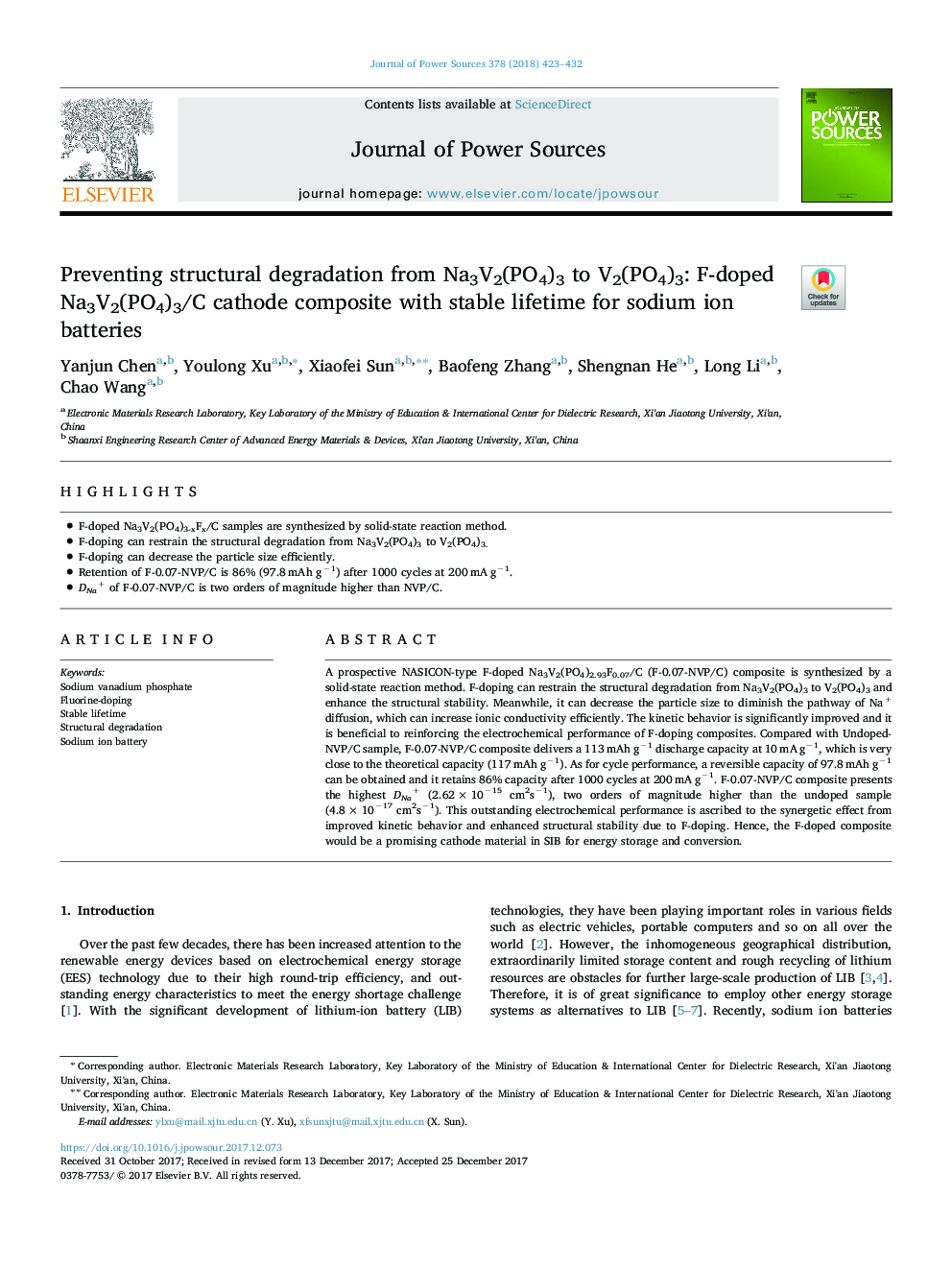| Article ID | Journal | Published Year | Pages | File Type |
|---|---|---|---|---|
| 7725869 | Journal of Power Sources | 2018 | 10 Pages |
Abstract
A prospective NASICON-type F-doped Na3V2(PO4)2.93F0.07/C (F-0.07-NVP/C) composite is synthesized by a solid-state reaction method. F-doping can restrain the structural degradation from Na3V2(PO4)3 to V2(PO4)3 and enhance the structural stability. Meanwhile, it can decrease the particle size to diminish the pathway of Na+ diffusion, which can increase ionic conductivity efficiently. The kinetic behavior is significantly improved and it is beneficial to reinforcing the electrochemical performance of F-doping composites. Compared with Undoped-NVP/C sample, F-0.07-NVP/C composite delivers a 113â¯mAh gâ1 discharge capacity at 10â¯mAâ¯gâ1, which is very close to the theoretical capacity (117â¯mAh gâ1). As for cycle performance, a reversible capacity of 97.8â¯mAh gâ1 can be obtained and it retains 86% capacity after 1000 cycles at 200â¯mAâ¯gâ1. F-0.07-NVP/C composite presents the highest DNa+ (2.62â¯Ãâ¯10â15 cm2sâ1), two orders of magnitude higher than the undoped sample (4.8â¯Ãâ¯10â17 cm2sâ1). This outstanding electrochemical performance is ascribed to the synergetic effect from improved kinetic behavior and enhanced structural stability due to F-doping. Hence, the F-doped composite would be a promising cathode material in SIB for energy storage and conversion.
Related Topics
Physical Sciences and Engineering
Chemistry
Electrochemistry
Authors
Yanjun Chen, Youlong Xu, Xiaofei Sun, Baofeng Zhang, Shengnan He, Long Li, Chao Wang,
